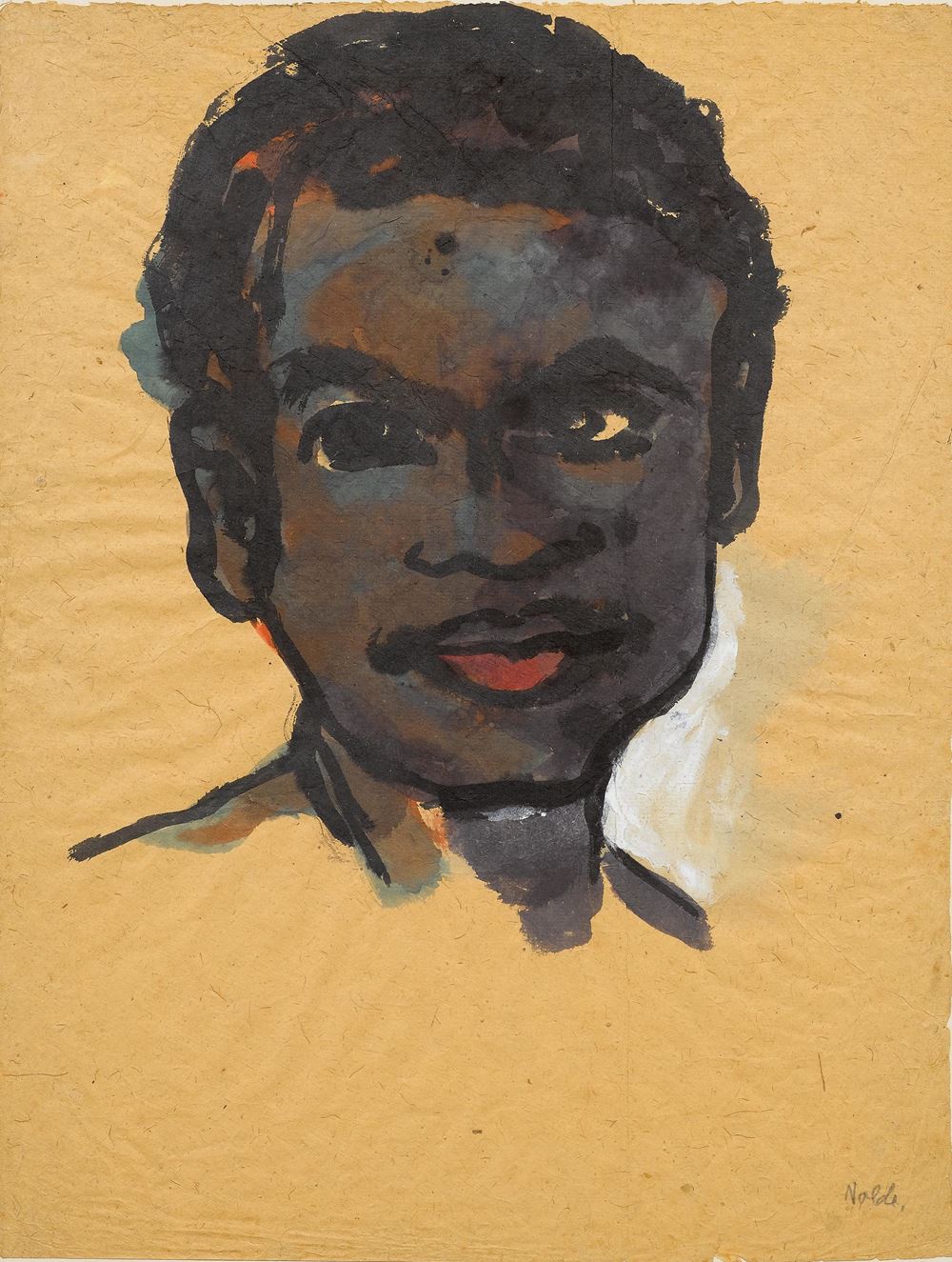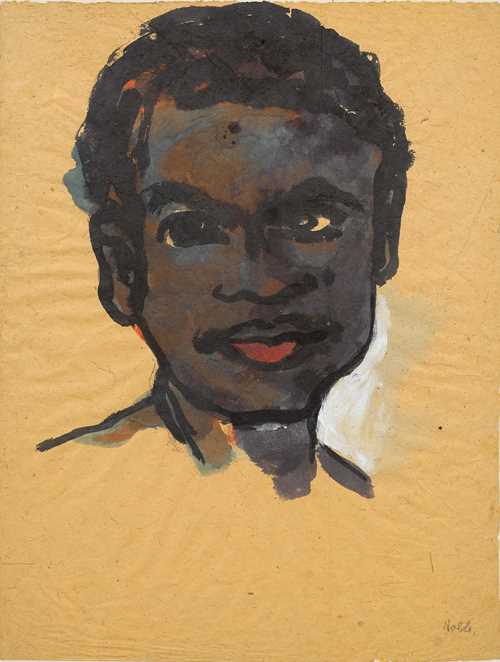
拍品 3252* - A181 印象派&现代主义 - Freitag, 30. Juni 2017, 02.00 PM
EMIL NOLDE
(Nolde 1867–1956 Seebüll)
Junger Eingeborener.
Watercolour and gouache on paper.
Signed lower right: Nolde.
50.2 x 37.5 cm.
The work is registered in the Archiv of the Emil Nolde Stiftung in Seebüll under the number 1369.
Provenance:
- Galerie Nierendorf, Berlin.
- Private property, Germany (bought from the above gallery).
Exhibitions:
- Hamburg/Essen/Munich 1957, Emil Nolde Gedächtnisausstellung. Kunstverein in Hamburg/Museum Folkwang/Haus der Kunst, 27. April - 16. June/29. June - 1. September/24. September - 1. December, no. 139.
- Berlin 1962, Die Maler der Brücke. Galerie Meta Nierendorf, no. 79 (with ill.).
In 1913 Emil Nolde, together with his wife Ada, two doctors and a nurse, undertook a journey to the South Seas. From Berlin by train to Moscow, on the Tran-Siberian Railway to Manchuria via stops in the Urals, Siberia and Lake Baikal, they continued onward by ship via Korea, Japan and China to Manila, the capital of the Philippines, from where they passed through the Philippine archipelago and across the Pacific Ocean. Finally, on 13th December 1913 the group arrived in Rabul on New Pomerania (New Britain). During the trip Nolde processed his impressions through painting and was especially fascinated by the people of the Philippines and New Pomerania/New Guinea. He produced various portraits of the inhabitants, the natives, living there. Nolde’s goal was "to get to know the firstness of nature and man completely untouched by civilisation". His painting is thereby regarded as documentary and not as an idealisation of the "noble savage". "I paint and draw and search to capture something of the primordial," explained Nolde, who was simultaneously shocked by the colonialised living conditions which he described as "destructive".
The outlines of his South Sea heads were always created in broad brushstrokes of black ink on wet rice paper, and then filled with colour. The proud heads are usually shown in frontal or half-profile views, equally portraying tribal chiefs and young islanders. With his documentary paintings, Nolde did not wish to become a "natural man" himself like Gaugin. Rather, he sought to create authentic portraits, focusing on showing an innocent and untouched society which sooner or later civilisation would disrupt. (see: Otterbeck, Christoph: Europa verlassen. Künstlerreisen am Beginn des 20. Jahrhunderts, Cologne 2007, p. 229 ff.)
Provenance:
- Galerie Nierendorf, Berlin.
- Private property, Germany (bought from the above gallery).
Exhibitions:
- Hamburg/Essen/Munich 1957, Emil Nolde Gedächtnisausstellung. Kunstverein in Hamburg/Museum Folkwang/Haus der Kunst, 27. April - 16. June/29. June - 1. September/24. September - 1. December, no. 139.
- Berlin 1962, Die Maler der Brücke. Galerie Meta Nierendorf, no. 79 (with ill.).
In 1913 Emil Nolde, together with his wife Ada, two doctors and a nurse, undertook a journey to the South Seas. From Berlin by train to Moscow, on the Tran-Siberian Railway to Manchuria via stops in the Urals, Siberia and Lake Baikal, they continued onward by ship via Korea, Japan and China to Manila, the capital of the Philippines, from where they passed through the Philippine archipelago and across the Pacific Ocean. Finally, on 13th December 1913 the group arrived in Rabul on New Pomerania (New Britain). During the trip Nolde processed his impressions through painting and was especially fascinated by the people of the Philippines and New Pomerania/New Guinea. He produced various portraits of the inhabitants, the natives, living there. Nolde’s goal was "to get to know the firstness of nature and man completely untouched by civilisation". His painting is thereby regarded as documentary and not as an idealisation of the "noble savage". "I paint and draw and search to capture something of the primordial," explained Nolde, who was simultaneously shocked by the colonialised living conditions which he described as "destructive".
The outlines of his South Sea heads were always created in broad brushstrokes of black ink on wet rice paper, and then filled with colour. The proud heads are usually shown in frontal or half-profile views, equally portraying tribal chiefs and young islanders. With his documentary paintings, Nolde did not wish to become a "natural man" himself like Gaugin. Rather, he sought to create authentic portraits, focusing on showing an innocent and untouched society which sooner or later civilisation would disrupt. (see: Otterbeck, Christoph: Europa verlassen. Künstlerreisen am Beginn des 20. Jahrhunderts, Cologne 2007, p. 229 ff.)
CHF 70 000 / 90 000 | (€ 72 160 / 92 780)
以瑞士法郎銷售 CHF 144 500 (包含買家佣金)
所有信息随时可能更改。

